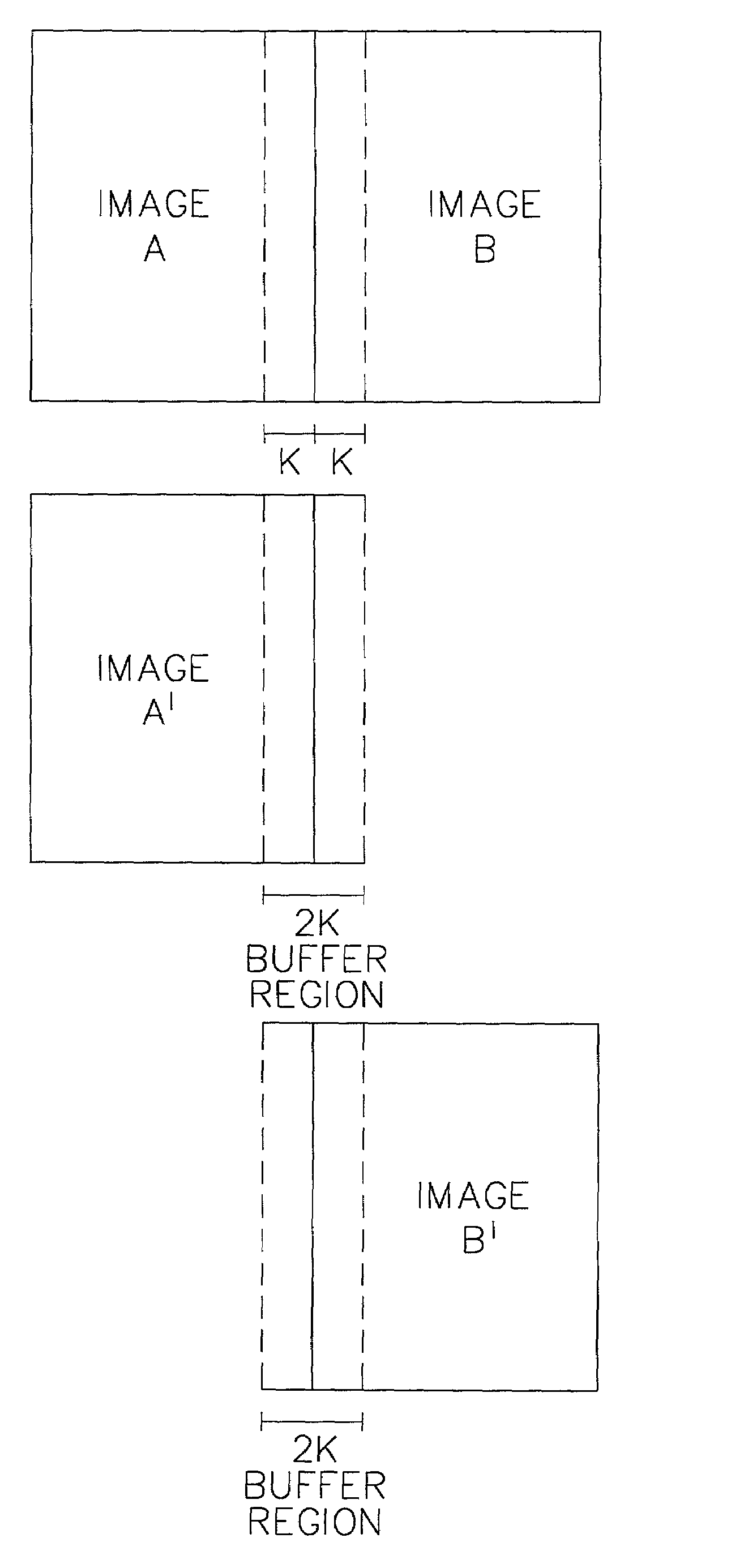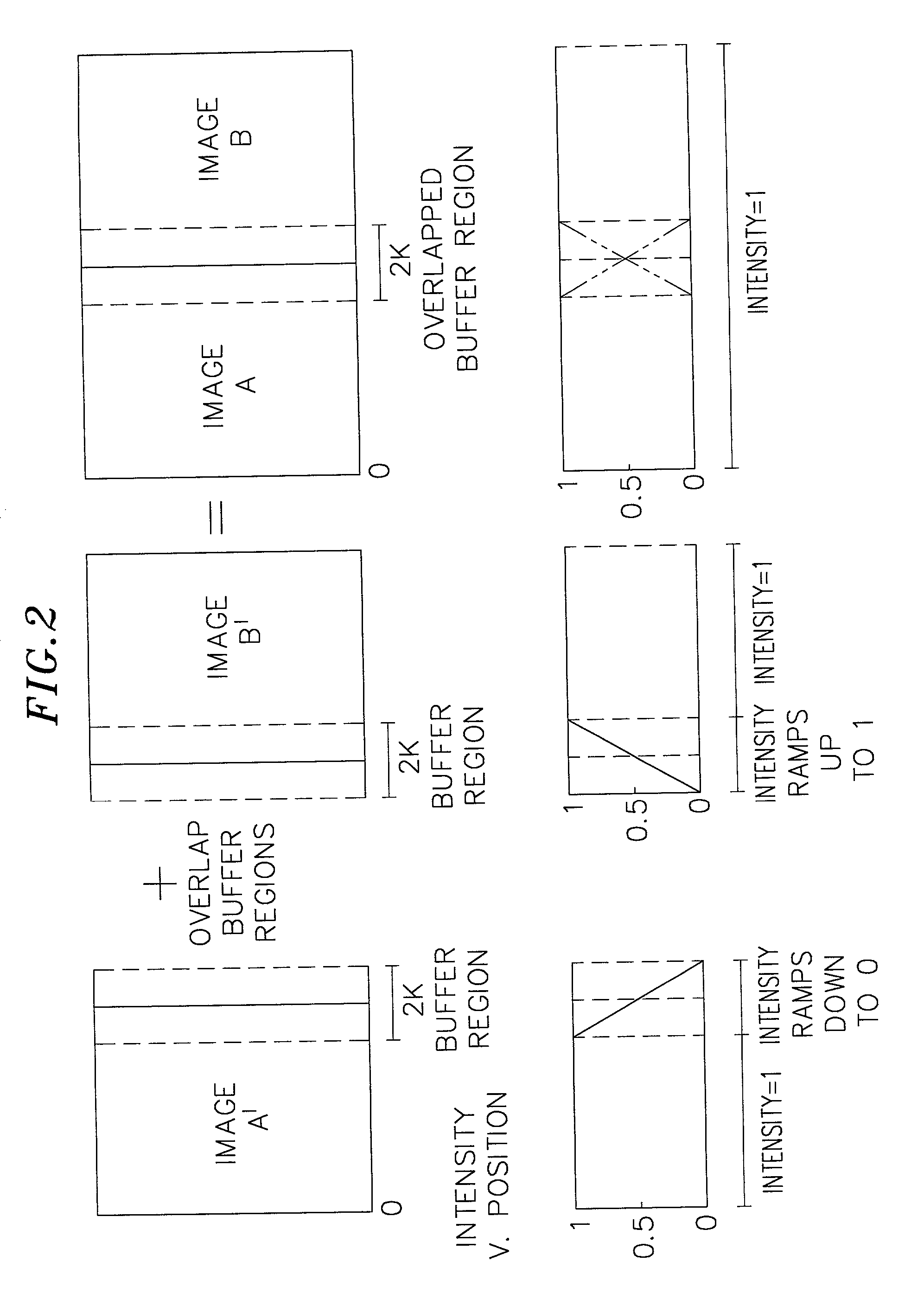Method and apparatus for reducing printing artifacts of stitched images
- Summary
- Abstract
- Description
- Claims
- Application Information
AI Technical Summary
Benefits of technology
Problems solved by technology
Method used
Image
Examples
Embodiment Construction
[0014]In a typical flatbed laser raster output scanner, an image is generated by “painting” a two dimensional raster image. One dimension is generated by scanning the laser beam or beams in the “fast scan” (horizontal) direction while the other dimension is generated by more slowly transporting the object or recording medium in a direction orthogonal to the fast scan (vertical or “slow scan”). The source of the printed data is typically generated from a database that is usually arranged in a rectilinear bitmap to be compatible with the raster scanned cathode-ray tube display and usually consists of digital data in binary form, either text or halftone images. In other words, the intensity of any one pixel may only be one of two levels of gray. However, in some cases, data for the raster image may be multi-level data. The exposed object is typically a photosensitive surface such as a printing plate, a xerographic drum, silver-halide film, or other photosensitive coated substrate. Alth...
PUM
 Login to View More
Login to View More Abstract
Description
Claims
Application Information
 Login to View More
Login to View More - R&D
- Intellectual Property
- Life Sciences
- Materials
- Tech Scout
- Unparalleled Data Quality
- Higher Quality Content
- 60% Fewer Hallucinations
Browse by: Latest US Patents, China's latest patents, Technical Efficacy Thesaurus, Application Domain, Technology Topic, Popular Technical Reports.
© 2025 PatSnap. All rights reserved.Legal|Privacy policy|Modern Slavery Act Transparency Statement|Sitemap|About US| Contact US: help@patsnap.com



